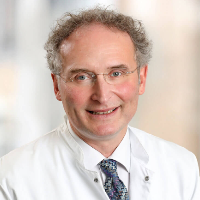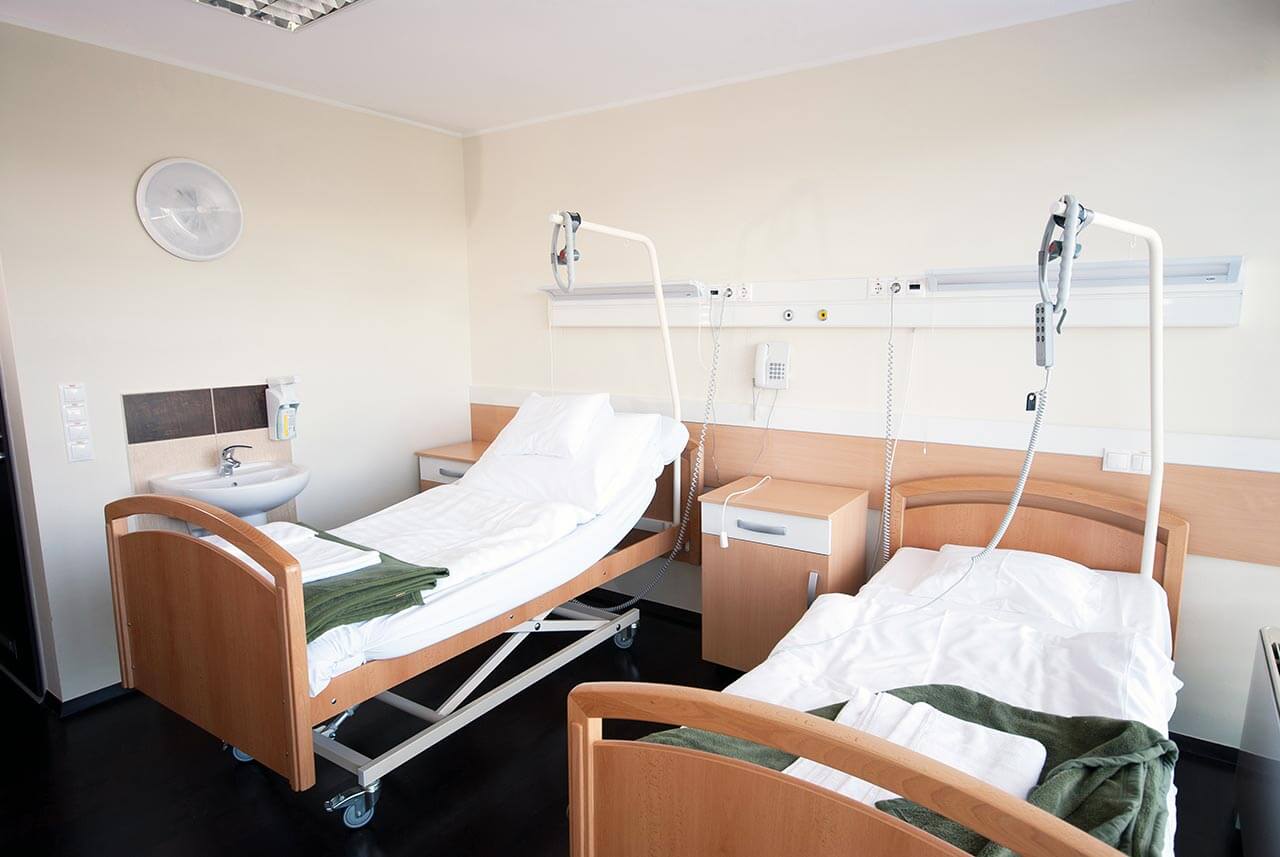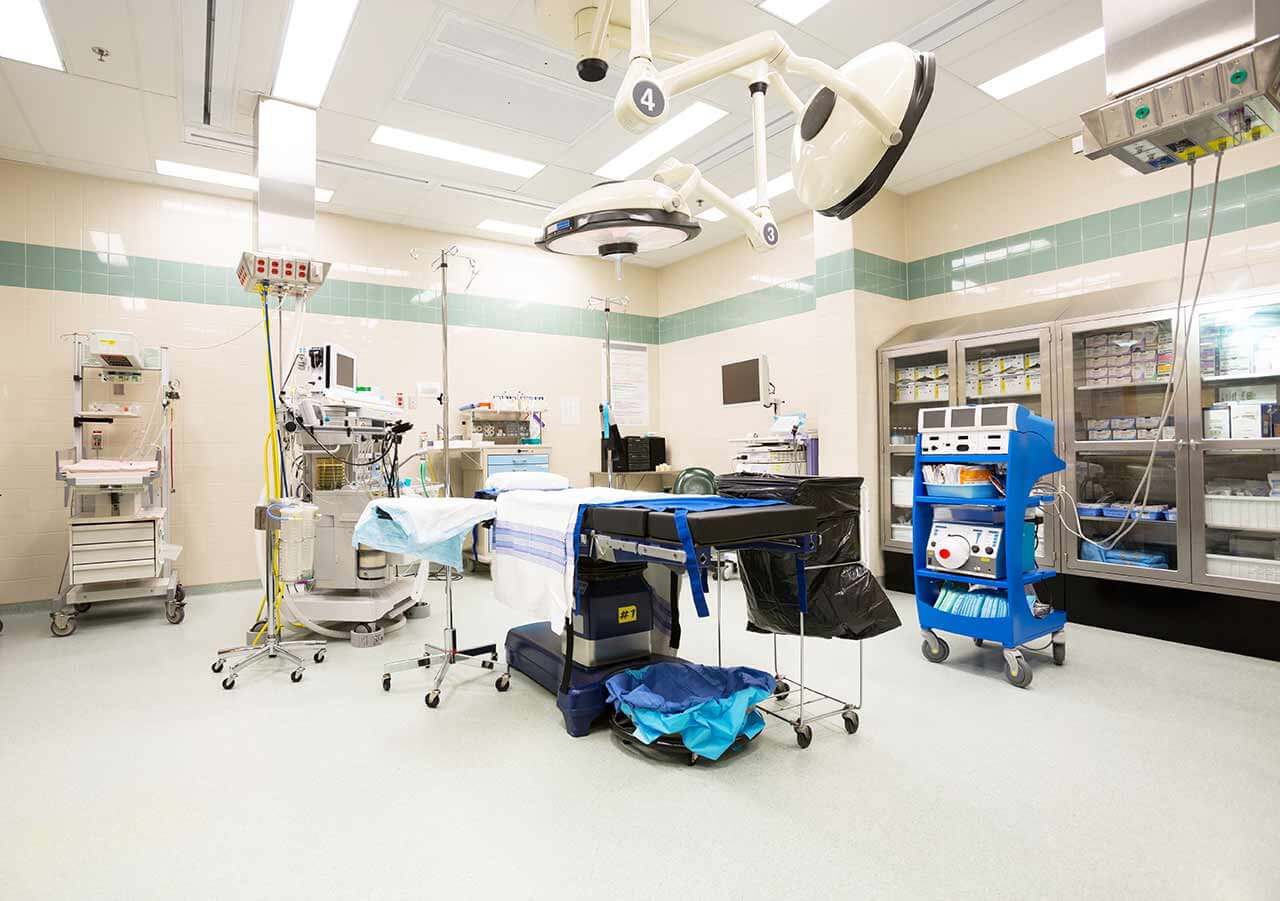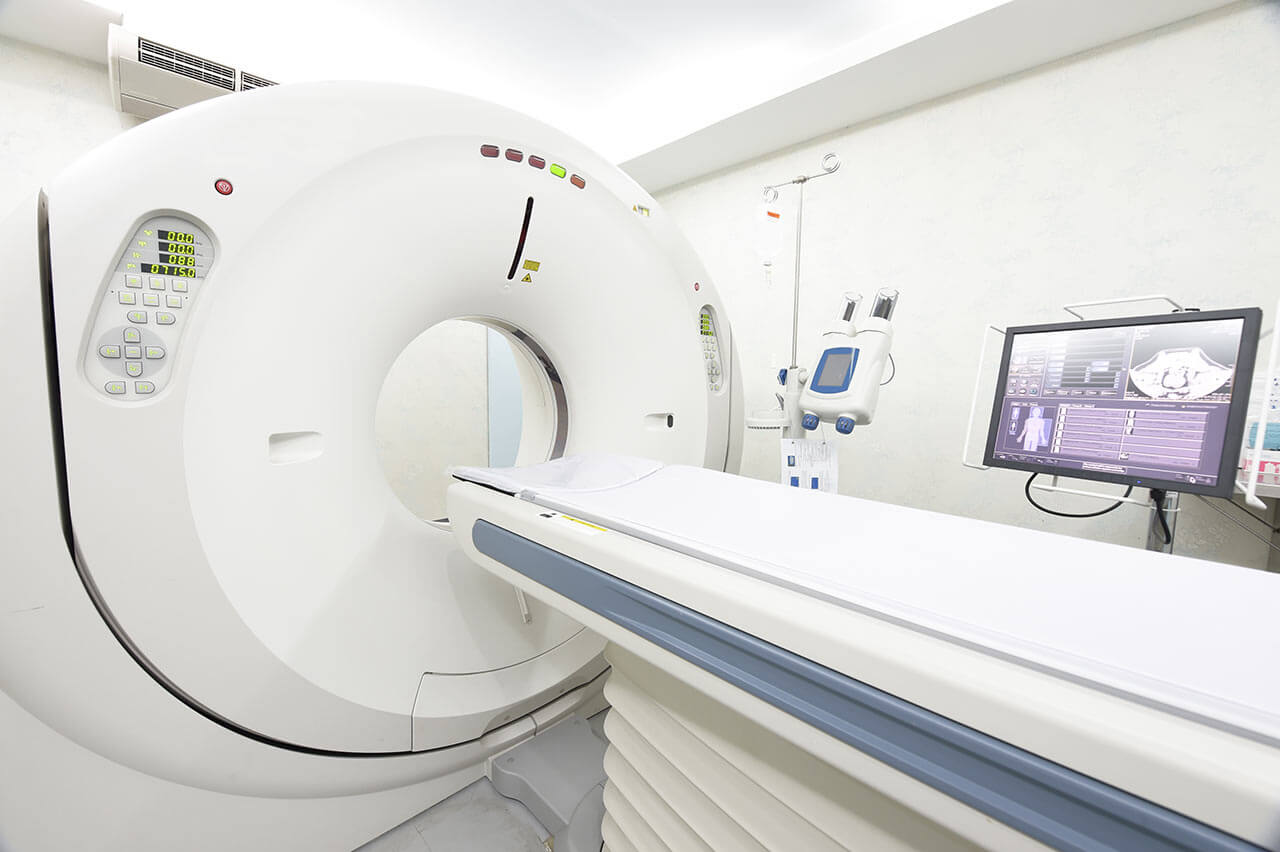
About the Department of Pediatric Orthopedics and Trauma Surgery at Helios Hospital Emil von Behring Berlin Zehlendorf
The Department of Pediatric Orthopedics and Trauma Surgery at the Helios Hospital Emil von Behring Berlin Zehlendorf offers the full range of medical services in its areas of specialization. The department's doctors treat diseases and injuries of the musculoskeletal system in children aged 0 to 18 years. The orthopedic team of the healthcare facility focuses on young patients with congenital and acquired malformations of the feet, lower extremities, and spine. Children with injuries to the skeleton, joints, tendons, and muscles can also receive medical care here. Surgical procedures to remove bone cysts and tumors are an integral part of the department's daily clinical practice. In addition, the department has gained impressive experience in the treatment of neuro-orthopedic diseases in children, with a special emphasis on cerebral palsy, spina bifida, Duchenne muscular dystrophy, Down syndrome, and Rett syndrome. When planning the treatment of orthopedic diseases in children, doctors always take into account the age of the child and the characteristics of the development of the musculoskeletal system at this age. Whenever possible, specialists perform conservative therapy. If a young patient needs surgery, minimally traumatic interventions are a priority. The department has a pleasant and child-friendly atmosphere. The Head Physician of the department is Dr. med. Jan Matussek.
An important area of work for the department's pediatric orthopedists is the treatment of hip pathologies. Hip dysplasia is the most common condition in clinical practice. This pathology causes underdevelopment of all elements of the hip joint: bones, ligaments, muscles, blood vessels, and nerves. In most cases, the diagnosis is made immediately after birth or in the first months of life. Diagnosis necessarily includes a physical examination and an ultrasound scan. If clinically indicated, specialists may also perform X-rays, CT scans, and/or MRI scans. A treatment regimen is developed for each child individually. First-line treatment includes conservative measures such as positioning and immobilizing of the affected hip joint with Pavlik's stirrups or Frejka splints, physiotherapeutic procedures, and massage. The option of surgical treatment may be considered when the above methods fail or when hip dysplasia is diagnosed at an advanced stage. The most effective and common surgical procedure for dysplasia is reduction: the surgeon dissects the soft tissues and articular capsule and releases the femoral head and neck, after which the femoral head is placed in an anatomically correct position. Depending on the specific clinical case, the doctors in the department also perform tenotomies, arthroscopies, or osteotomies.
The department also regularly treats young patients with leg length discrepancies. If the child does not receive proper treatment, in the future he or she will have not only an aesthetic defect, but also serious health problems, such as scoliosis, gait abnormalities, and hip, knee, and ankle diseases. To make a diagnosis, the department's orthopedists study the family medical history of the young patient, carry out a clinical examination, perform a lower extremity topogram, and assess the child's gait. The treatment regimen is developed individually, depending on the severity of the pathology. To compensate for minor leg length discrepancies, conservative therapy with the help of therapeutic exercises, manual therapy, and wearing heel pads, orthopedic insoles, and orthopedic shoes is sufficient. More complex cases may require surgical correction. The department's team of doctors successfully performs epiphysiodesis, which is a surgical procedure aimed at temporarily or permanently stopping the growth of the length of one of the lower extremities. Longitudinal growth of tubular bones in children occurs due to epiphyseal plates (growth plates), the impact on which allows for stopping the growth of one of the extremities and aligning it longitudinally. Epiphysiodesis can be performed only during the period of active growth of the child's skeleton. The operation is performed using minimally invasive techniques. Older children are candidates for a shortening osteotomy, during which the department's surgeons remove a fragment of the femur or tibia and then fix the remaining parts of the bone together with screws and plates. An osteotomy can be used to shorten a limb that is too long or to lengthen a limb that is too short. Another treatment option for leg length discrepancies is a correction with external fixation systems.
The department's specialists have extensive experience in the treatment of neuro-orthopedic diseases in children. Doctors treat young patients with cerebral palsy, spina bifida, Duchenne muscular dystrophy, Down syndrome, Rett syndrome, and other neuro-orthopedic pathologies. Pediatric orthopedists provide individual consultations for children and their parents, select orthopedic aids, perform botulinum therapy, and perform minimally invasive surgical procedures of varying complexity.
Of particular clinical interest to the department's orthopedic team is the treatment of scoliosis in children. The pathology is characterized by the lateral curvature of the spine relative to its axis. During the diagnostic process, the child undergoes a clinical examination, X-rays, computed tomography, and/or magnetic resonance imaging. In most cases, the department's specialists use only conservative treatments, such as therapeutic exercises, massage, and the correction of spinal curvature using special corsets and bandages. If the child is diagnosed with a grade 3 or 4 spinal curvature, surgery may be required. The department's team of orthopedists successfully performs spinal fusion using minimally invasive techniques.
The department's clinical focuses include the following:
- Diagnostics and treatment of foot diseases with special emphasis on congenital foot deformities
- Diagnostics and treatment of hip diseases with special emphasis on hip dysplasia and hip dislocation
- Diagnostics and treatment of leg length discrepancy
- Diagnostics and treatment of O-shaped and X-shaped deformities of the lower extremities
- Diagnostics and treatment of patellar dislocation
- Diagnostics and treatment of bone cysts and tumors
- Diagnostics and treatment of scoliosis and kyphosis
- Diagnostics and treatment of neuro-orthopedic diseases: cerebral palsy, spina bifida, Duchenne muscular dystrophy, Down syndrome, Rett syndrome, arthrogryposis multiplex congenita, and others
- Diagnostics and treatment of musculoskeletal injuries: fractures of the upper and lower extremities, pelvic fractures, spinal fractures, cruciate ligament tears, meniscus tears, cartilage injuries, and shoulder dislocations
- Other medical services
Curriculum vitae
Higher Education and Professional Career
- 1983 - 1989 Medical studies, Free University of Berlin.
- 1990 - 1991 Internship, Department of Orthopedics, St. Elisabeth Hospital Straubing.
- 1991 - 1992 Internship, Department of Trauma Surgery, DRK Hospital Charlottenburg Berlin.
- 1992 - 1993 Assistant Physician, Department of Abdominal Surgery and Trauma Surgery, Wohlfart Clinic Munich-Gräfelfing.
- 1993 - 1998 Assistant Physician, Department of Orthopedics and Trauma Surgery, Charité University Hospital Berlin.
- 1998 - 2000 Senior Physician, Department of Orthopedics and Trauma Surgery, Charite University Hospital Berlin.
- 2000 - 2001 Senior Clinical and Research Fellow, Department of Pediatric Orthopedic Surgery, Royal Children's Hospital Melbourne, Australia.
- 2001 - 2004 Senior Physician in the Department of Orthopedics and Trauma Surgery and Head of the Section for the Congenital Malformations and Dysmelia, Charite University Hospital Berlin.
- 2003 - 2004 Acting Head Physician, Department of Orthopedics and Trauma Surgery, Charite University Hospital Berlin.
- 2006 Board certification in Orthopedics and Trauma Surgery, additional qualification in Pediatric Orthopedics.
- 2004 - 2018 Senior Physician, Department of Pediatric Orthopedics and Spinal Surgery, University Hospital Regensburg.
- Since 2019 Head Physician, Department of Pediatric Orthopedics and Trauma Surgery, Helios Hospital Emil von Behring Berlin Zehlendorf.
Clinical Interests
- Treatment of foot deformities and injuries and their complications.
- Treatment of knee joint injuries and their complications, treatment of patellar dislocation.
- Correction of axial and rotational deformities of the lower extremities.
- Treatment of scoliosis, kyphosis, and spondylolisthesis.
- Treatment of dysmelia and hemihypertrophy.
- Treatment of musculoskeletal injuries.
- Treatment of hip diseases: hip dislocation, hip dysplasia, Legg-Calve-Perthes disease, and juvenile femoral head epiphysiolysis.
Memberships in Professional Societies
- 2016 Member of the Australian Paediatric Orthopaedic Society (APOS).
- 2017 Honorary Member of the Indian Medical Association (IMA).
Photo of the doctor: (c) Helios Klinikum Emil von Behring





